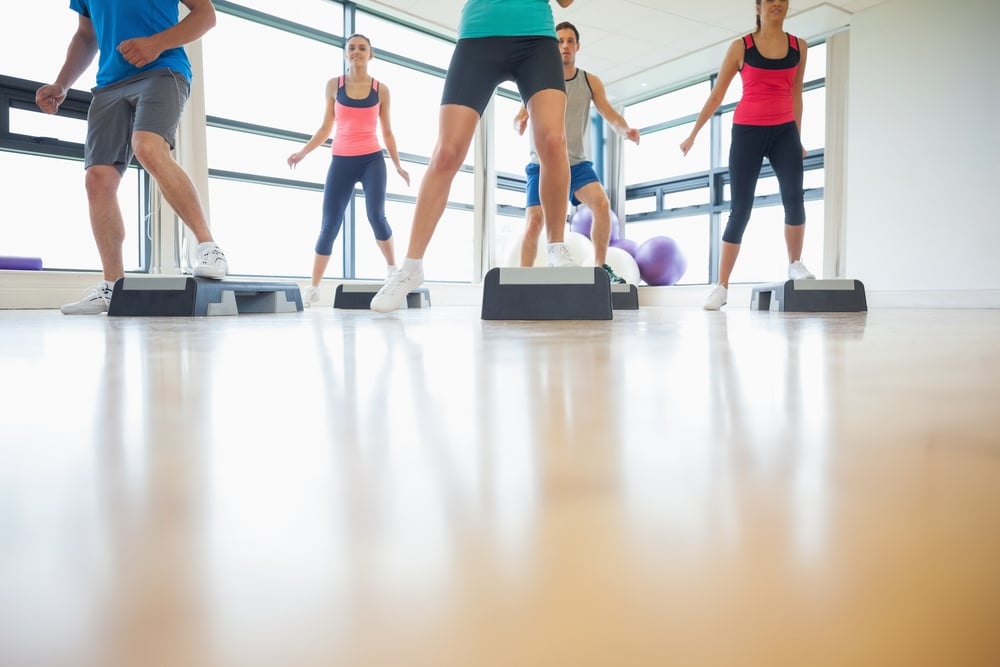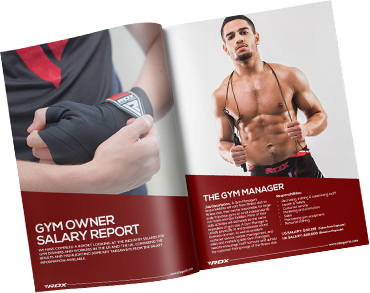Your first step in designing or fitting-out your gym is choosing the right gym flooring as there are so many different aspects to take into consideration. To help you decide, we’ve created this guide to how to choose the perfect commercial gym flooring.
Why is Gym Flooring Important?
Get your flooring right and customers will appreciate it. Get it wrong and they’ll leave for better pastures. It's that simple.
There are three very good reasons to get the right gym flooring installed in your gym.
Firstly, gym flooring should be a strong, durable surface for exercising on and it needs to support heavy equipment and machinery. It can come in various thicknesses; generally the thicker the better, i.e. the stronger and tougher it’ll be.
Another clear advantage of installing gym flooring is ensuring there is sufficient grip. This will prevent unnecessary injury as machinery and equipment will be less likely to experience unintentional movement.
Finally, the third benefit of having dedicated gym flooring is hygiene. Gyms are sweaty. Despite members’ best efforts, sweat will inevitably get on weight machines and the floor, so having an easy-clean floor surface has clear hygiene benefits for users.
In short, your gym flooring needs to cope with a lot, including:
- Heavy equipment
- Intensive use
- Sweat and spillage
- Temperature fluctuations
- Vibration and noise
- Varying humidity levels
- Unhygienic factors like dirt, dust,
odor , and bacteria
What type of gym flooring should you have in your gym?
There are two choices when installing your gym flooring. You can either have one type of flooring throughout, or you can mix it up with different flooring for different zones.
How to choose multiple gym flooring materials
When outfitting a new gym, the flooring will be the first thing installed. If you are considering having specialist gym zones/areas, each with its own complimentary gym flooring material, then you'll need to have a clear idea of your desired design and layout.
To do this, consider the following:
- What each zone/area is going to be?
- Where each zone/ area will be?
- What type of flooring material is needed?
- What equipment is needed?
How to choose single gym flooring materials
Installing one type of flooring material throughout your gym is easier because there is no need to segment or plan for certain gym zones. However, you'll still need to understand exactly what the properties of each material are:
Wood Flooring
A wood floor looks great, but there are some big question marks for using this material.
The wood floor needs to withstand the constant jumping and traction of those using it without suffering visible scuffing or damage. It also can’t be too hard that it impacts on training athletes. The biggest threat to your wooden floor comes from the free weight area where inevitably weights will be dropped and dents will appear.
There are various different choices, however, a layered product that is built up over a composite rubber underlayer for maximum absorption will provide the strength and durability required while showcasing the timeless look only wood can exhibit.
Matting
If you do go for a wood-type flooring then you should consider some sort of protective PVC matting to go underneath some of the freestanding or portable machines, like treadmills and cycles. Just like thicker rubber flooring, they provide grip as well as protecting your beautiful wood from scratching and damage.
Sprung Flooring
Gyms that offer a lot of dance or yoga classes will find a sprung floor offers the best shock absorption for the high-level impact of dance, Zumba, fitness classes, gymnastics, and floor martial arts like judo.
Sprung floors usually have a surface layer that is either laminate or wood with a foam backing alongside support battens that cradle the floor above the under-flooring system.
This means it has maximum shock absorption ideal for any gym where heavy equipment isn’t used, helping to reduce the occurrence of sports injuries.
Rubber Flooring
Fitted rubber flooring has a number of benefits and it’s easy to see why it’s one of the most common gym flooring systems used. The many benefits include:
- Easy installation
- Seamless panels (unless using tiles)
- Durability
- Easy maintenance
- Long lifecycle
Most rubber gym flooring is a type of EPDM (ethylene propylene diene monomer) which is both durable and flexible. It can come in a wide range of
Most rubber flooring product is supplied in three types, either interlocking panels, rolls or square tiles:
Floor Tiles are the easiest to buy, transport and replace. However, they do not interlock and need to be laid with adhesive. If flooring has become worn or you'd like to change your
Floor Rolls are by far the easiest to lay and the cheapest to install. The benefit of rubber floor rolls includes fewer joints and reducing trip potential. The adhesive is also less inclined to become unattached through heavy traffic use and the
Interlocking Tiles are jigsaw-like in appearance and are another heavy-use floor tile that reduces the need for adhesives. This allows them to be moved and replanted without the need for replacing them.
Do I need to install an underlay?
Depending on what type of flooring you install you may want to increase the shock absorption of your flooring by fitting an underlay. The underlay works as a shock pad with an open-air cell structure allowing energy and sound dissipation, prolonging the life of the rubber flooring.
This is useful for your free weights area where additional shock absorption is used to compensate the damage produced by dropped weights to the flooring and the weights themselves.
When should you consider noise and vibration reducing gym flooring?
One overlooked gym flooring consideration is what occurs when gyms take up multiple floors in a building or are located above other businesses or residential properties.
Depending on the age of the building and the existing flooring in situ, it might be required to put in some kind of ‘floating floor’ which can offer reduced vibration and decreased acoustic noise from heavy workout machinery and energetic gym routines.
These products are designed to reduce structural acoustic vibration and noise impact by installing separate flooring levels incorporating both underlay and sports flooring material.
Your gym floor goes through a lot, so make sure you have carefully considered every aspect of your gym to find the right option for you. Your floor, just like your gym members, know that every step counts.





